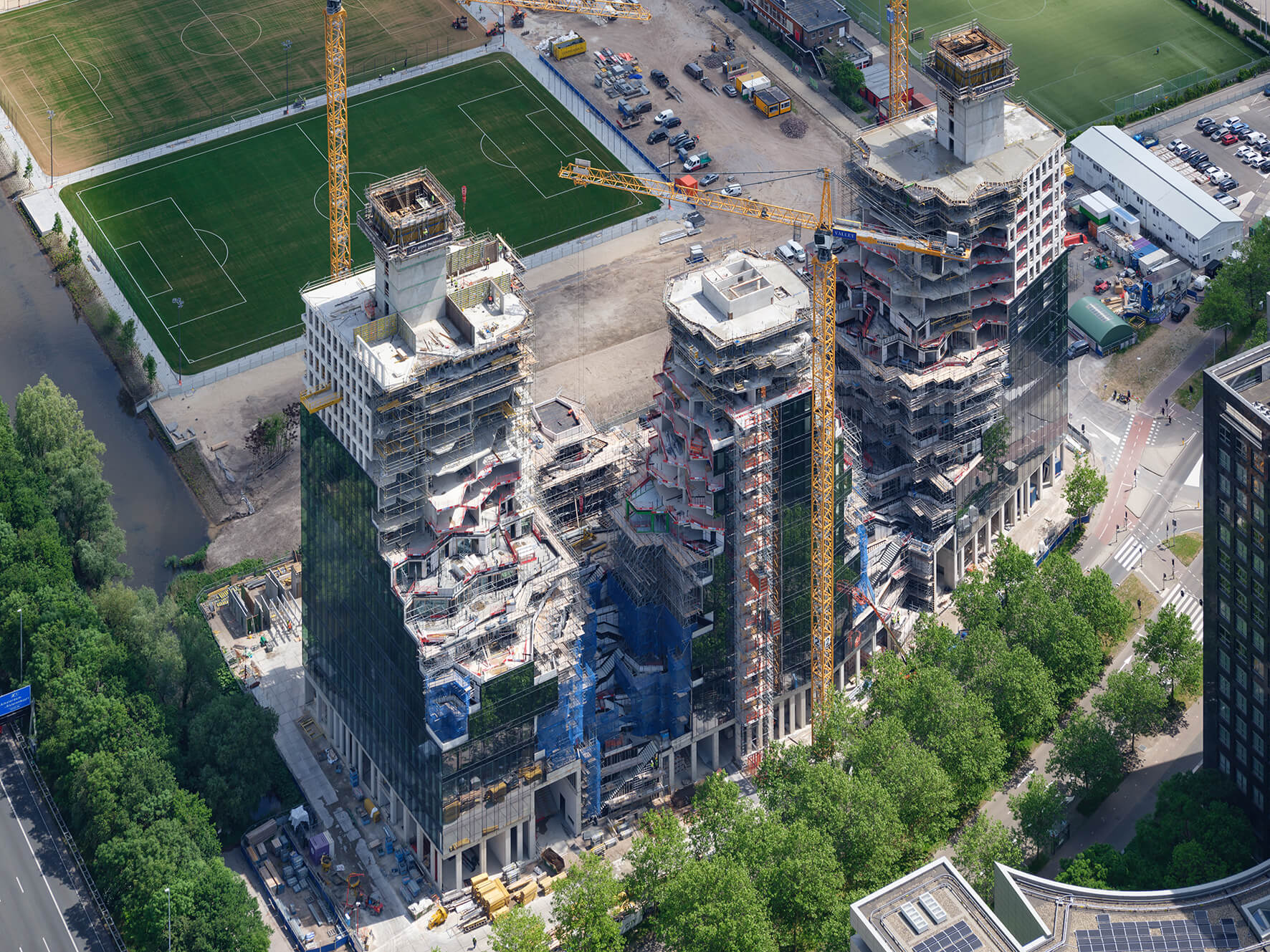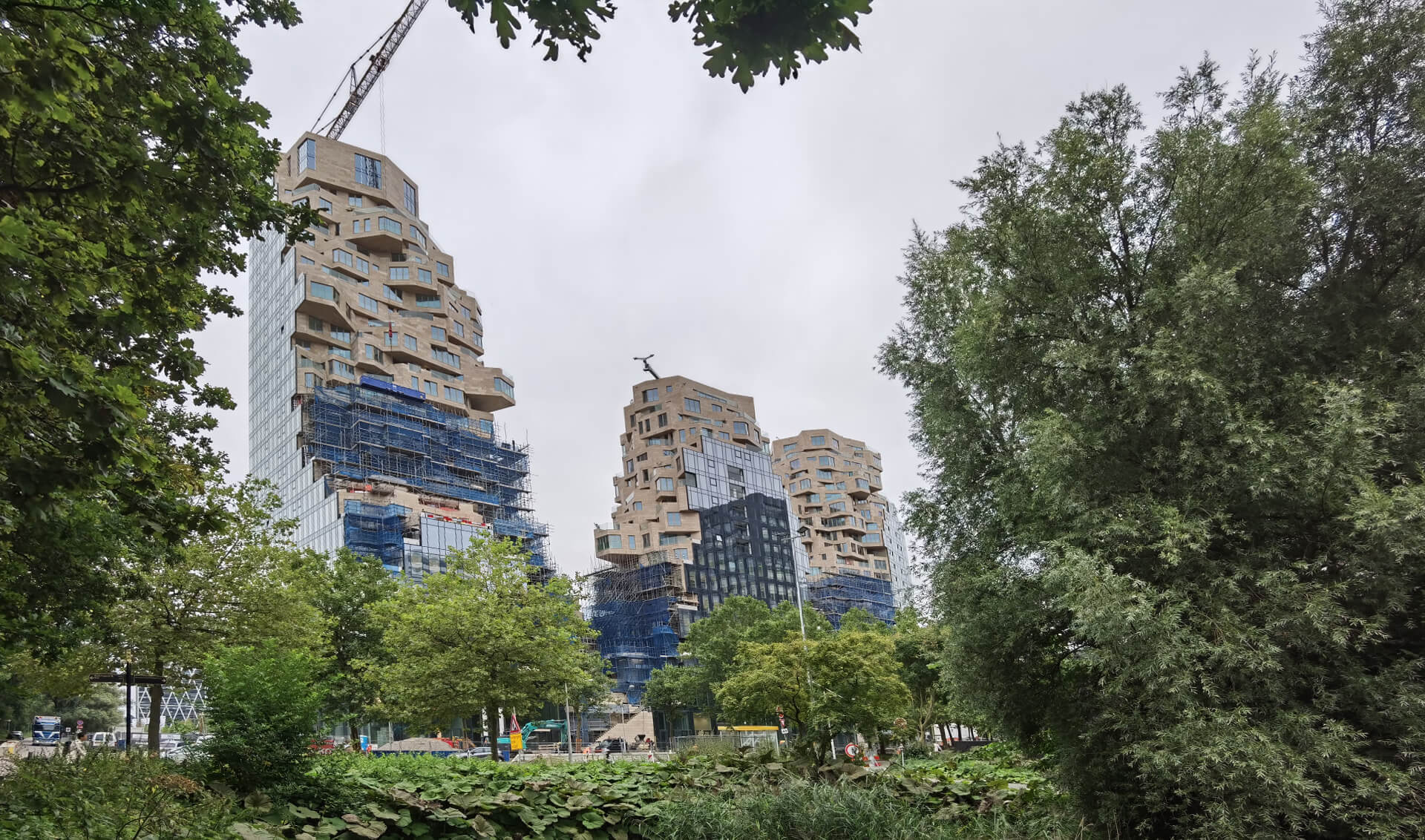- Architect
MVRDV
- Location
Amsterdam - Completion Date
2015 - Planting Design
Piet Oudolf - Structural Engineer
Van Rossum Raadgevende Ingenieurs - Contractor
G&S Bouw B.V. and Boele & Van Eesteren B.V. - Engineering
Inbo - Parametric facade design
Arup - Glazing
Blitta - Natural Stone
Kolen Natuursteen
When it comes to designing buildings that look like mountains, MVRDV is in a league of its own. That may sound like a spurious claim, but the Rotterdam-based firm regularly injects a jolt of playful geology into its projects. Valley, a mixed-use complex located in Amsterdam’s Zuidas business district, takes this trope to an extreme.
The approximately 810,000-square-foot project comprises three tall peaks, sheer on their outer faces and craggily irregular on the obverse. The gridded curtain wall by Netherland-based fabrication company Blitta gevelsystemen is perfectly flat and seamlessly integrated. The inner facade is more complex: Each floor has a different contoured profile, which results in expressive balconies and terraces. The towers sit on a shared podium, with the space in between recalling—you guessed it—a valley.

MVRDV NEXT, an in-house group of specialists that develops custom workflows and next-generation technologies, collaborated with Arup to detail these rocky outcroppings—no easy feat. Equipped with a bespoke parametric tool, they made as many as 45 design iterations over a period of eight months before landing on the final “wild bond” stone patterning. The facade system comprises 42,000, one-inch-thick tiles in six standard sizes. The team relied on know-how from KOLEN Keramiek en Natuursteen, an Eindhoven-based stone supplier and fabricator, to determine the assembly.
[ad “interstitial”]
The irregular patterning proved to be an aesthetically pleasing solution to the massing’s many contours and sharp angles. “At first, in the tender documents, we proposed a regular running bond brick pattern, because at that point we had only drawn a partial sample of the facade,” MVRDV director Gideon Maasland told AN. “However, the 3D framework of the structure rendered such an approach unsightly at the corner seam. So we went from a repeating pattern of approximately 31 inches by 16 inches to a mix of sizes, with a maximum obtuse angle of 40 degrees. The largest tiles are double the original size, which generated a degree of enthusiasm from the contractor’s side.”
From a structural standpoint, the towers themselves are fairly straightforward; all three are centered on approximately 26-by-26-foot building cores that handle most of each floorplate’s structural load. Still, several of the longer cantilevers required additional support in the form of 26-by-16-foot steel frames bolted to steel anchors cast into the concrete balcony slabs.

The detailing of these slabs was yet another challenge. Maasland explained: “The terrace floor is just under seven inches above floor level; even one-tenth of an inch higher or lower would impact the waterproofing and allow for leakage. Furthermore, the ceiling of each balcony is connected to the cantilevered beam, which, in turn, has to be insulated and clad in natural stone. Combining all of these elements together was the most complex issue of the project.” The struggle will pay off when these spaces begin blooming with vegetation. (The overall planting scheme was worked out by famed Dutch garden designer Piet Oudolf.)
The project’s geologic sensibility continues inside, with a grotto set below a skylight that’s also a reflecting pond. MVRDV’s stony formation is set to open later this year.
[ad “article1”]





